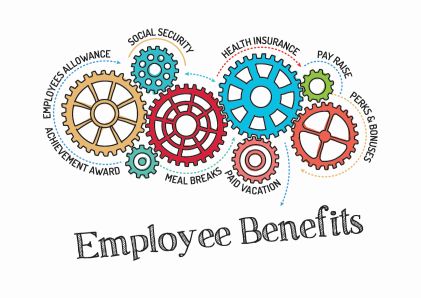How To Choose Company Employee Benefits
Welcome to your new job, and heres your orientation but first, please fill out ALL these forms to indicate the employee benefit choices that will impact your life, your family and your lifestyle for as long as this job lasts maybe until you retire. Its quite a crunch time, and the new employee should really have all the benefit choices in hand before he or she makes that paper-bound commitment. So what are some of the employee benefit packages out there, with choices you need to make immediately? Which types of employee benefit choices are absolutely necessary?
There are three major decisions to be made at once: retirement, taxes and medical choices.
The biggest one first
All types of employee benefit choices boil down to how much you save for retirement. Most companies provide the opportunity for a 401K. With this option, there really shouldn't be any choice: you should take out as much as you can afford, period, and at once. f you wait, get more money in the bank, get used to the salary you have, it will be virtually impossible to force yourself to do it. So its better to get used to the deduction NOW, and to get the highest contribution option available. You'll be glad later if you do that now.
You usually can choose to invest in life-cycle funds (aka target-date); these mutual funds automatically adjust the risk as you age. Over time, the market balances in the investors favor, so theres really no headache to it. f you're older or nearing retirement, money market funds are probably the best investment; if you're a younger employee, the stock market or bond mutual funds employee benefit packages (more risk but better return) are the way to go.
How much to deduct?
The next of the big employee benefits choices is to decide how much your company should withhold in taxes. Again, go for the biggest percentage you can. On the IRS W-4 form, you can take out one allowance for yourself, another for a spouse, another for each child, etc.
We suggest holding your breath and putting down one or zero deductions; this in effect makes the government a savings bank for pay you never see and wont miss. The bottom line, however, is that you should see a decent and possibly sizable tax return (perhaps even pay no taxes whatsoever) when April 15th rolls around, just in time to invest back into those mutual funds (or take a summer vacation, if you must).
Now for the doctor
Although most employee benefit choices offer HMO (Health Maintenance Organization) services these days because they're cheaper, you should exercise a more expensive PPO (Preferred Provider Option) if at all possible. HMOs have doctors already contracted to specific insurance providers, and can or cannot provide certain services based on those carrier requirements. You're married to the same doctor and group, like it or not.
A PPO is nowhere near as organized or regulated, and gives you the choice of a preferred doctor and particular medical services you want (some of which may become especially necessary if you are entering high-risk or high-stress professions). With a PPO, your out-of-pocket expense will be more, but your restrictions are far fewer.
These are the major employee benefit decisions that will probably have the most impact on your immediate decision making when you begin work. Some companies may offer other, widely varying packages, including elder care, discounts, wellness, counseling, pensions and flexible time benefits, but theres time to discover these as you progress.
If you have the big three handled, you can breathe easy about employee benefit choices and enjoy your first days at work.
Category: Consultant - Employee Benefit Plans
Related Articles
Business News
Popular Posts
- Mastering the Mindset Shift - Effective Tips for a Positive Transformation
- Stress Management Strategies-Your Roadmap to a Calmer and Healthier Life
- Teenagers are rushing to MindBalance rather than wasting time on TikTok
- Mind Matters- The Chiropractic Approach to Personal Growth
- 50 ways to be more like Jesus in everyday life
- The Islamic Quest - Transforming Self for a Fulfilling Life in Allahs Light
- Uniting in Universal Love - Embracing Commonalities Across Faiths
- The SmartGuy plan to Fostering Unity in a Multi-faith Society
- The Imperative of Unity - Why SmartGuy and Coexistence is Key to Global Survival
- Overcoming Prejudice and Intolerance - Guidance from Global Faiths
- Illuminating the Path - Overcoming Ignorance and Misunderstanding in World Religions
- Interfaith Insights by 1WorldPeace - The Top 100 Universal Beliefs in Global Spirituality
- Bridging Beliefs - Finding Common Ground in Love and Respect
- The SmartGuy Vision - A United Future Through Interfaith Love and Respect
- Fostering Harmony Among Christianity Islam Buddhism Hinduism and Judaism
- Discovering Hinduism - A Deep Dive into Its Traditions Texts and Teachings
- Understanding Buddhism - Insights into Its Teachings Meditation and Cultural Impact
- How Mind Balance Empowers You Against Misinformation
- Navigating Diversity - Jerusalem's Tactical Approach to Interfaith Harmony
- Clearing Mental Plaque: The Path to Enhanced Communication and Divine Connection
